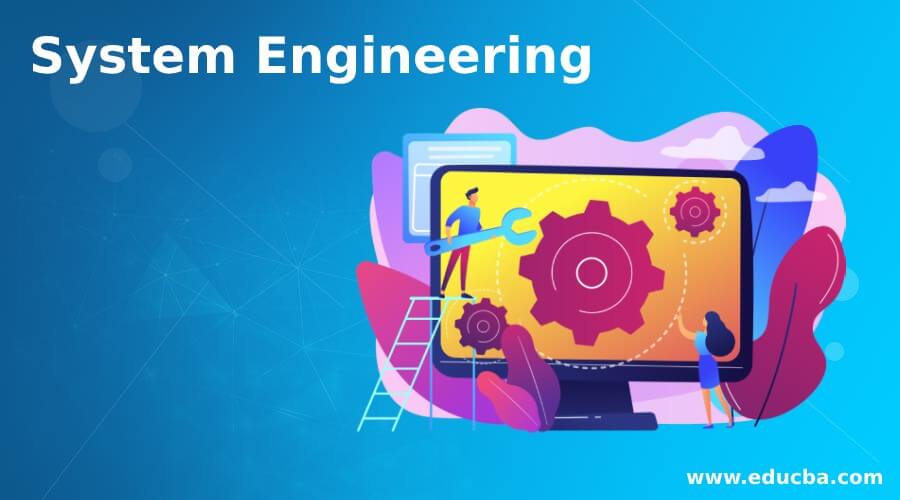Updated April 7, 2023
Introduction to System Engineering
System engineering focuses on developing a variety of elements and then analyzing, designing and organizing those elements into a system that can be a product, a service or a technology for the transformation of information or control. System engineering is about the software and the hardware and how the user interacts with the system in the implemented environment. It is a strong approach for the design, development and functioning of systems.
It identifies and prioritize the system goals, identifies the alternative system design concepts, identifies the performance, selection and implementation of the best design. It also verifies that the design is properly developed and integrated. This approach performs the post-implementation evaluation of how well the system meets the goals.
System Engineering Process
There are seven steps which are carried out during the system engineering process.
- State the problem: In this step, the problem is stated. It includes tasks like identifying the customers, understanding their requirements, establishing the need for the changes, discovering the requirements and defining system functions.
- Investigate alternatives: Based on the performance, cost and risk, various alternatives are investigated and evaluated.
- Model the system: Using models clarifies requirements, find out bottlenecks and uneven activities, reduces cost and exposes duplication of efforts.
- Integrate: Integrate means designing an interface and bringing the system elements together to work as a whole. It is impossible to start developing and finishing all the sub systems at the same. Also, if all sub systems are integrated simultaneously, the error that arises during testing may be in any of these sub systems and locating that error becomes difficult. Therefore, incremental integration reduces the cost of error location because the error that occurred is probably in the newly integrated sub systems or in the interaction between the existing sub systems and the new sub systems.
- Launch the system: The process of running the system and producing outputs making the system do what it was intended to do, is known as launching the system.
- Assess performance: Performance is assessed using evaluation criteria, technical performance measures.
- Re-evaluation: It should be a continual and iterative process with many parallel loops.
The main purpose of system engineering is to produce systems that satisfy the customers’ requirements, increase the probability of system success, reduce risk and reduce total life cycle cost. System engineer works to understand the requirements of system by working with the custom users and stake holders. System engineering takes on different forms depending on the application domain in which it is applied. For example, BPE (Business Process Engineering) and PE (Product Engineering). In business process engineering, the main focus is on the business enterprise and in Product engineering, the main focus is on the product to be built. Although they are used in different application domains, both of them needs computer software or computer-based systems.
Components of System
A system is a set of interrelated components which are combined together to perform a specific task. Hence, a system is modeled as a set of components and relationships between these components.
A system is developed in four-layer as follows:
- Conceptual layer: System objectives, system scope and interfaces to other systems.
- Logical layer: Rules and regulations, data flows and procedures, functions and processes.
- Control layer: Control based on condition and constraints to ensure the results.
- Operational: User interface, data entry, operational flow and maintenance.
Computer-Based Systems
A computer-based system is a set of elements that are generated to accomplish some pre-defined goal by processing information. The goal may be to support some business function or to develop a product. To accomplish the goal, a computer-based system makes the use of system elements.
The system elements are:
- Software: It is a computer program and data structure that affects the logical method, procedure, or control required.
- Hardware: Electronic devices that enable the flow of the data and electromechanical devices that provide external world function.
- People: Users and operators of hardware and software.
- Database: Database is a large organized collection of information that is accessed through software and persists over time.
- Documentation: It contains descriptive information that describes the use and operation of the system.
- Procedures: The steps that define the specific use of each system element or procedural context in which the system resides.
Recommended Articles
This is a guide to System Engineering. Here we discuss the introduction, system engineering process, components and computer-based systems. You may also have a look at the following articles to learn more –



